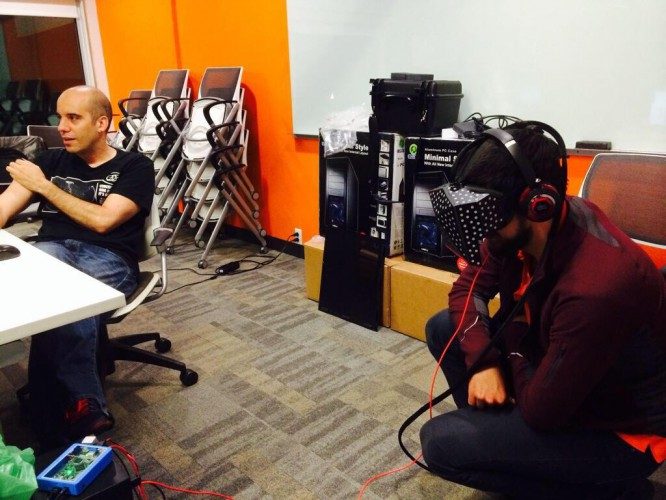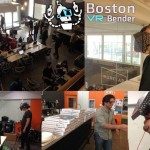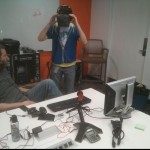Prior to Valve’s developer expo Steam Dev Days earlier this year, little was known about the company’s hardware R&D in the VR space. However, the now famous Steam Dev Days demo room which housed Valve’s latest development prototype, was home to some pretty staggering virtual reality experiences according to the developers lucky enough to try it.
It was after this event that the term ‘presence’ really got a foothold amongst the community as a way to describe a virtual reality experience that was accepted by your mind as an alternate reality (within boundaries of course). The unit leveraged 2 x 1080p OLED panels in portrait mode that employed low persistence of vision at a reportedly high (90Hz+) refresh rate to achieve this state of presence. The VR Headset also used an onboard camera to track special QR Codes placed around the walls to provide reportedly excellent positional tracking. In fact, it was Valve who convinced Oculus that low persistence of vision was the answer to the issue of motion blur and stuttering they’d previously attacked by extremely high refresh LCD panels.
Now, a new version of the VR Headset has appeared at a recent Boston VR Bender where Valve demoed the unit to attendees. Subsequently, images of the new headset in use have sprung up on social networking sites that reveal what’s changed.
The unit has ditched the requirement for QR codes and a camera mounted on the HMD itself for a system more analogous to the system first revealed by Oculus VR at CES 2014 with the Crystal Cove prototype (and now employed in the company’s forthcoming Developer Kit 2 aka DK2). The HMD, previously uncovered with internal components on display now sports a new external casing, covered with what look to be trackable spots on all surfaces. In the pictures, a desk mounted camera can be seen that presumably tracks the spots and provides positional tracking information as input to the experience. It’s certainly not pretty but is does mean that the prototype HMD has become portable and no dedicated QR covered demo room is required.
It’s interesting that Valve clearly is continuing with the development of this prototype despite the exit of many of their VR R&D team’s members – chief among them being Michael Abrash who recently joined Oculus VR as Chief Scientist.
Were you at the Boston VR Bender? did you get time with Valve’s VR headset? What was the experience like? Drop your thoughts in the comments below or fire us an email at info@roadtovr.com – we’d love to hear from you.
Thanks to ‘MyNonpornOculusAccnt’ (probably of of my favourite usernames BTW) of the /r/oculus subreddit for the find. You can find more info on the Boston VR Meetup which continues today here.










